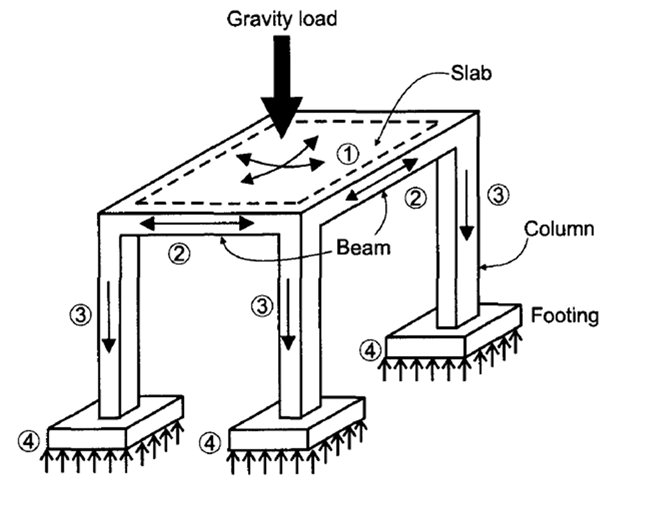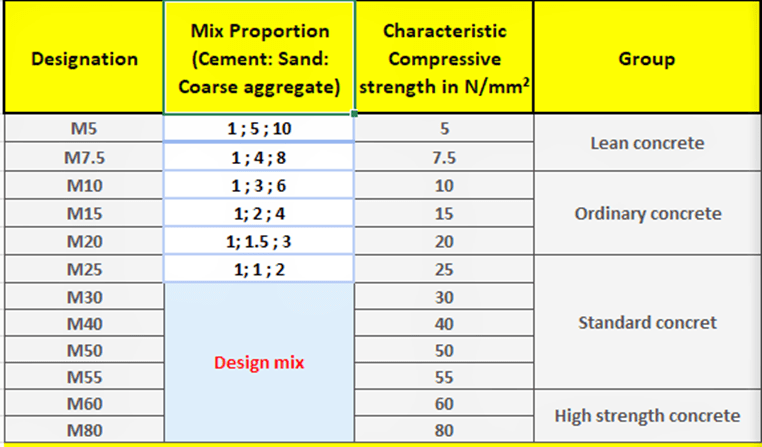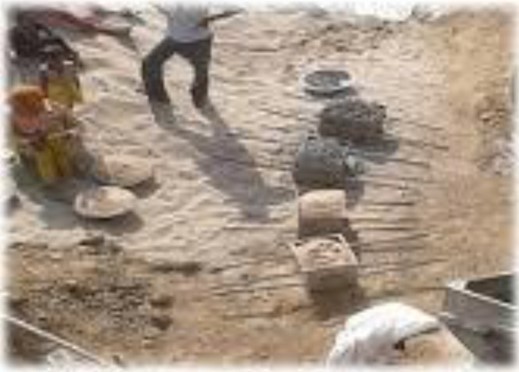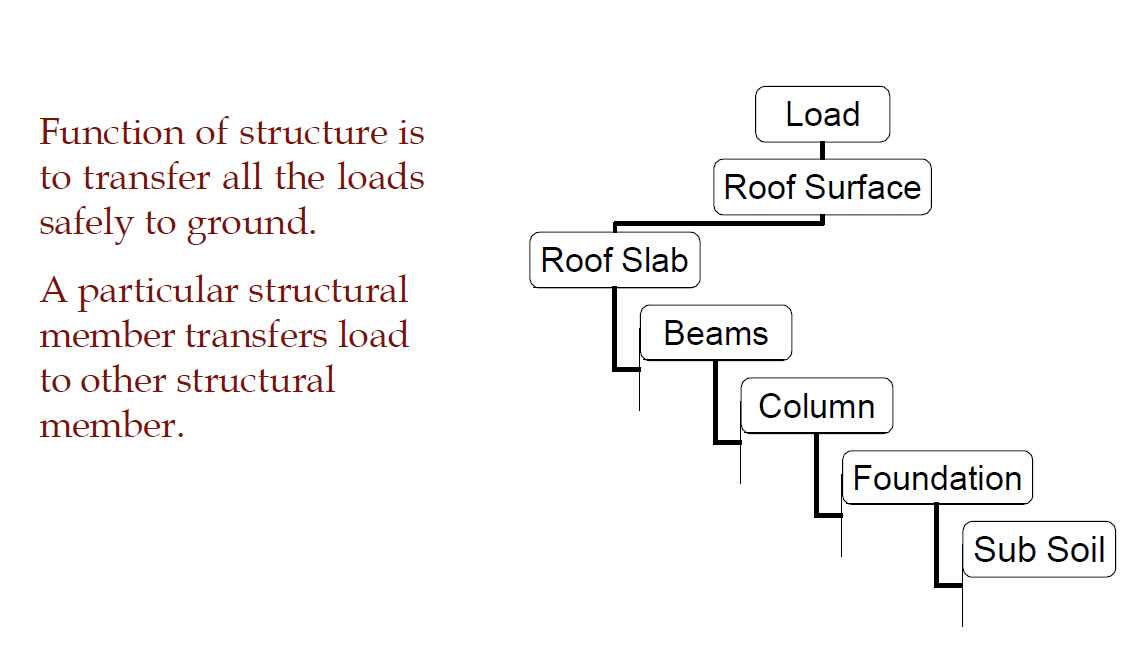
Design Principles of Concrete Structures
-
Text Book
-
Concrete Structures (Part-I) by Zahid Ahmad Siddiqi
-
-
References
-
Reinforced Concrete (6th Edition) by Edward G. Nawy
-
Design of Concrete Structures (14th Edition)
by Arthur H. Nilson, David Darwin & Charles W. Dolan
- Building Code Requirements for Structural Concrete (ACI 318-19)
- Building Code Requirements for Structural Concrete (ACI 318-19)
-
Concrete
Concrete
Concrete is a mixture of cement, fine and coarse aggregate.
Concrete mainly consists of a binding material and filler material.
If filler material size is < 4.75 mm it is fine aggregate and > 4.75mm is coarse aggregate. (ASTM Sieve #4)
Concrete
Plain Cement Concrete (PCC)
Mixture of cement , sand and coarse aggregate without any reinforcement is known as PCC.
PCC is strong in compression and week in tension. Its tensile strength is so small that it can be neglected in design.
Reinforced Cement Concrete (RCC)
Mixture of cement , sand and coarse aggregate with reinforcement is known as RCC. (Tensile strength is improved)
Concrete
Common Mix Proportion
Cement : Sand : Crush
Water Cement Ratio (W/C)
1 : 1.5 : 3
1 : 2 : 4
1 : 4 : 8
W/C = 0.5 – 0.6
For a mix proportion of 1:2:4 and W/C = 0.5, if cement is 50 kg
|
Sand |
= 2 x 50 = 100 Kg |
|
|
Crush Water |
= 4 x 50 = 200 Kg = 50 x 0.5 = 25 Kg |
Batching By Weight |
 Classification of Grades of Concrete
Classification of Grades of Concrete

Batching by Weight


Batching by Volume


Mechanism of Load Transfer



Merits of Concrete Construction
- Good Control over cross sectional dimensions and Shape One of the major advantage of concrete structures is the full control over the dimensions and structural shape. Any size and shape can be obtained by preparing the formwork accordingly.
-
Availability of Materials
All the constituent materials are earthen materials (cement, sand, crush) and easily available in abundance.
-
Economic Structures
All the materials are easily available so structures are economical.
-
Good Insulation
Concrete is a good insulator of Noise & heat and does not allow them to transmit completely.
Merits of Concrete Construction (contd…)
-
Good Binding Between Steel and Concrete
there is a very good development of bond between steel and concrete.
-
Stable Structure
Concrete is strong in compression but week in tension and steel as strong in tension so their combination give a strong stable structure.
-
Less Chances of Buckling
Concrete members are not slim like steel members so chances of buckling are much less.
-
Aesthetics
Concrete structures are aesthetically good and cladding is not Required
-
Lesser Chances of Rusting
steel reinforcement is enclosed in concrete so chances of rusting are reduced.
-
Demerits of Concrete Construction
-
Week in tension
- Concrete is week in tension so large amount of steel is required.
-
Increased Self Weight
- Concrete structures have more self weight compared with steel structures so large cross-section is required only to resist self weight, making structure costly.
-
Cracking
- Unlike steel structures concrete structures can have cracks.
- Concrete is very weak in tension and hence, even if steel reinforcement is provided, concrete members crack on the tension side.
-
Unpredictable Behavior
-
If same conditions are provided for mixing, placing and curing even then properties can differ for the concrete prepared at two different times.
Demerits of Concrete Construction
-
Inelastic Behavior
concrete is an inelastic material, its stress-strains curve is not
straight so its behavior is more difficult to understand.
-
Shrinkage and Creep
Shrinkage is reduction in volume. It takes place due to loss of water even when no load is acting over it. Creep is reduction in volume due to sustained loading when it acts for long duration. This problem is not in steel structures.
-
Limited Industrial Behavior
The industrial behavior in concrete construction is limited because of the difficulty in joining the precast concrete units and the resulting appearance. The construction time is also accordingly greater for the in-situ construction.
THANK YOU
This Lecture is from Concrete Structures (Part-I)
by Zahid Ahmad Siddiqi Book






